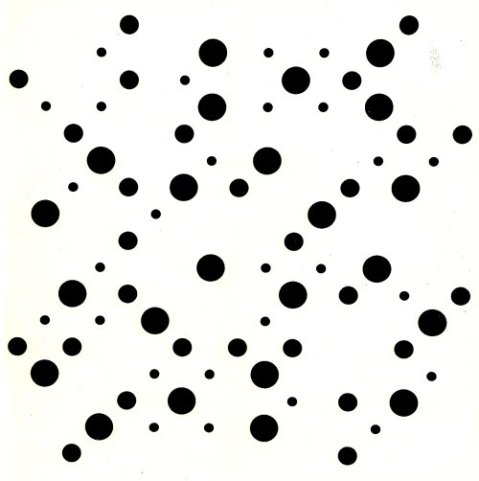“at the same time that arguments for generating a homeostatic synthesis between art and science were made, another movement was generating a unique mixture of patterns, intuition, technology, symmetry, and pop culture: op art.” [1]
31/05/2012 § 2 Comments
bridget riley, white disks (1964)
…. for others, both its power and its danger lie in the sometimes pleasurable, sometimes unnerving effects that it generated. either way, it was quickly and successfully dismissed by the art establishment as a superficial, misplaced, and dangerous gimmick. by ignoring the categorical disparity between two areas of knowledge, reason and sensation, it allegedly denied art’s ability to act as a foil, if not an antidote to the rampant technological utopianism of the time. further, the work’s quick appropriation by the culture industry – op’s eye-bending graphics appeared on fifth avenue dresses and head shop posters in greenwich village – served to reinforce the criticism that they were both superficial and scientifically suspect. [2]
complex not complicated
a young hare
notes:
[1] Andersen, Paul, and David L. Salomon. The Architecture of Patterns. New York: W.W. Norton &, 2010. 81. Print.
[2] ibid
[image] for more of bridget riley’s work click here.

hello young hare — just wanted to mention the strange role played by Op Art in movie sets of the period as well as 5th Ave dresses — strange, deeply avant-garde abrupt interludes in otherwise deeply cheesy product like, say, the *Modesty Blaise* movie:
Perhaps a film festival of movies in which Op Art plays a stylistic role: MB, Clouzot’s *Inferno,* *The Tenth Victim,* *A Clockwork Orange* …
[…] immersions] building off a series of previous ayh posts found here and here. Like this:LikeBe the first to like this […]